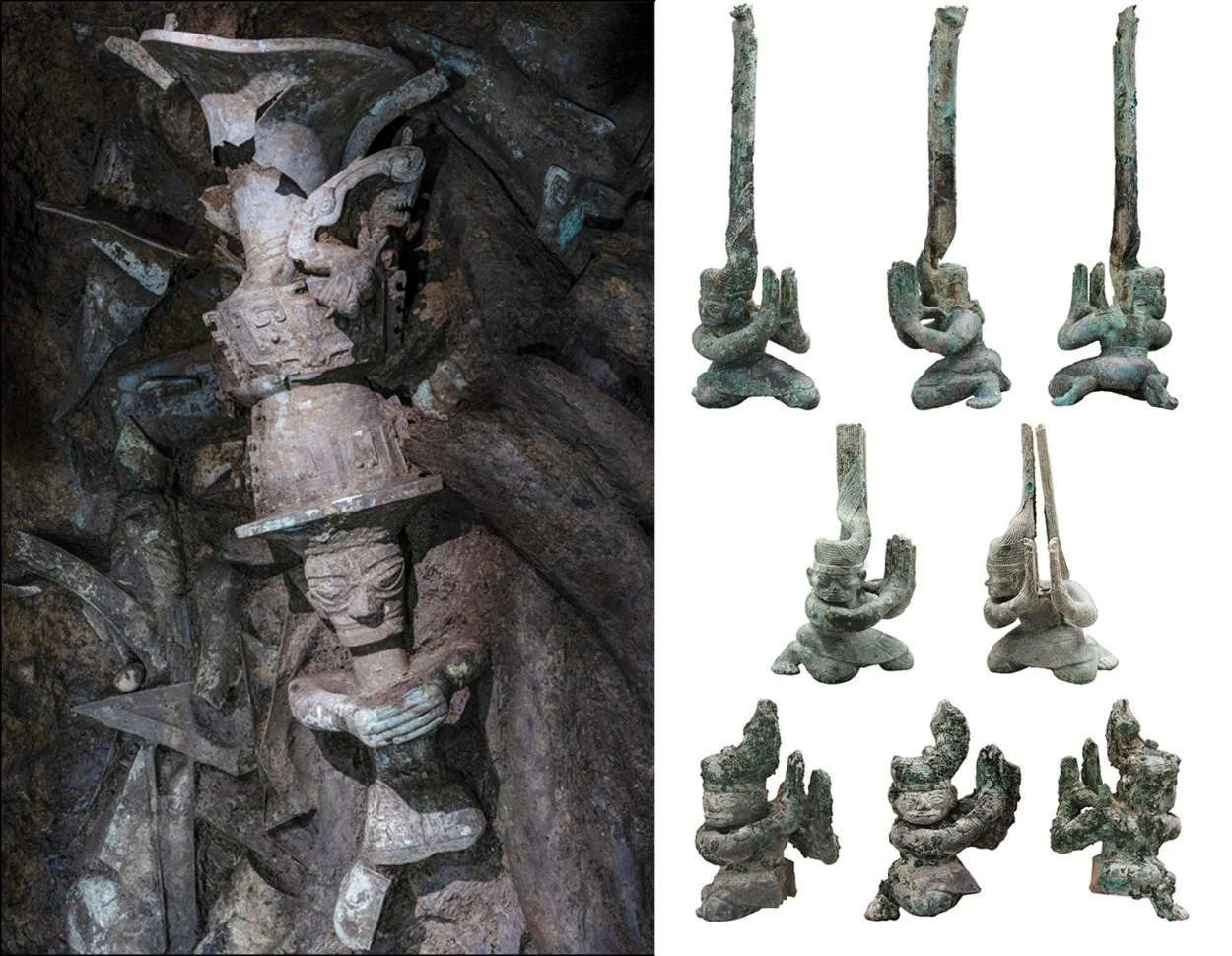A paper by the Cambridge University Press has revealed the latest discoveries at the Bronze Age site of Sanxingdui in Sichuan, China.
Sanxingdui, meaning ‘Three Star Mound’, was a major Bronze Age culture in modern Guanghan. Evidence of the culture were first uncovered in 1928, when a farmer found a large stash of jade relics while dredging an irrigation ditch.
The first excavations were conducted in 1934, but the revelation of a major culture was revealed in 1986, when archaeologists found two sacrificial pits (Pits 1 and 2) containing over 900 bronze, gold, jade and ivory artefacts. Finds at the time were dated to around 2700 – 1000 BC, giving new insights into the development of metallurgy, urbanism and culture in Bronze Age China.
Since 2019, Archaeologists have continued to excavate the area around Sanxingdui, including parts of the urban site, the Yueliangwan and Cangbaobao walls, the Qingguanshan site and the Renshengcun cemetery.
Studies under the Ancient Shu Civilization Protection and Inheritance Project identified 6 new pits and a large number of artefacts back in 2020. The 6 pits, measuring between 3.5 and 20m2 are rectangular in shape and were found adjacent to Pits 1 and 2. An on-site laboratory was constructed to preserve organic remains and artefacts, while each pit had specially adapted cabins built over them to maintain the temperature and humidity.
The paper describes the clear differences on the deposition of the artefacts: “Artefacts were buried in obvious layers in Pits 3, 4, 7 and 8, with mainly ivory in the upper layers and bronze artefacts in the lower layers. Pit 5 contained predominantly small gold objects and ivory products, while Pit 6 contained a ‘wooden chest’ featuring red paint produced with cinnabar”.
Bronze objects recovered are predominantly vessels and figurines, although many new artefacts are distinct from those found in Pits 1 and 2. Archaeologists also found gold foil ornaments in shapes such as stripes, circles and birds, and a golden mask from the Shang and Zhou Dynasties.
Using advanced scientific methods, the researchers have been able to gain a greater understanding into the sacrificial custom of the Sanxingdui Culture, as well as new insights into the exchanges that took place between the Chengdu Plain and Central Plains, and the middle and downstream areas of the Yangzi River.
The application of advanced scientific methods throughout the excavations has allowed the sacrificial custom of the Sanxingdui Culture to be understood in greater detail.
The paper concludes: “As the excavations proceed, the systematic differences between the various pits, as well as their precise chronology, will become clearer, allowing us to provide an increasingly detailed understanding of the dynamics of the Sanxingdui Culture and how it compares with other contemporaneous Bronze Age urban centres in early China.”
https://doi.org/10.15184/aqy.2022.150
Header Image Credit : Xu et al. Reference Xu2021a: 107





